Table of Contents
Sourdough baking has seen a surge in popularity recently. It’s a craft that combines science, art, and a touch of magic.
In this article, we’ll delve into the world of sourdough. Specifically, we’ll focus on a delightful dessert that’s a twist on a classic: Sourdough Cinnamon Rolls.
This recipe is a perfect way to use your sourdough starter. It’s also a great solution for those wondering what to do with their sourdough discard.
The sourdough adds a unique tang to the cinnamon rolls. It complements the sweet, spicy filling beautifully.
We’ll guide you through the process step by step. From preparing your sourdough starter to baking the rolls, we’ve got you covered.
Whether you’re a seasoned sourdough baker or a beginner, this recipe is for you. It’s a fun, rewarding project that results in a delicious treat.
So, are you ready to embark on this sourdough adventure? Let’s get started on our Sourdough Cinnamon Rolls recipe.
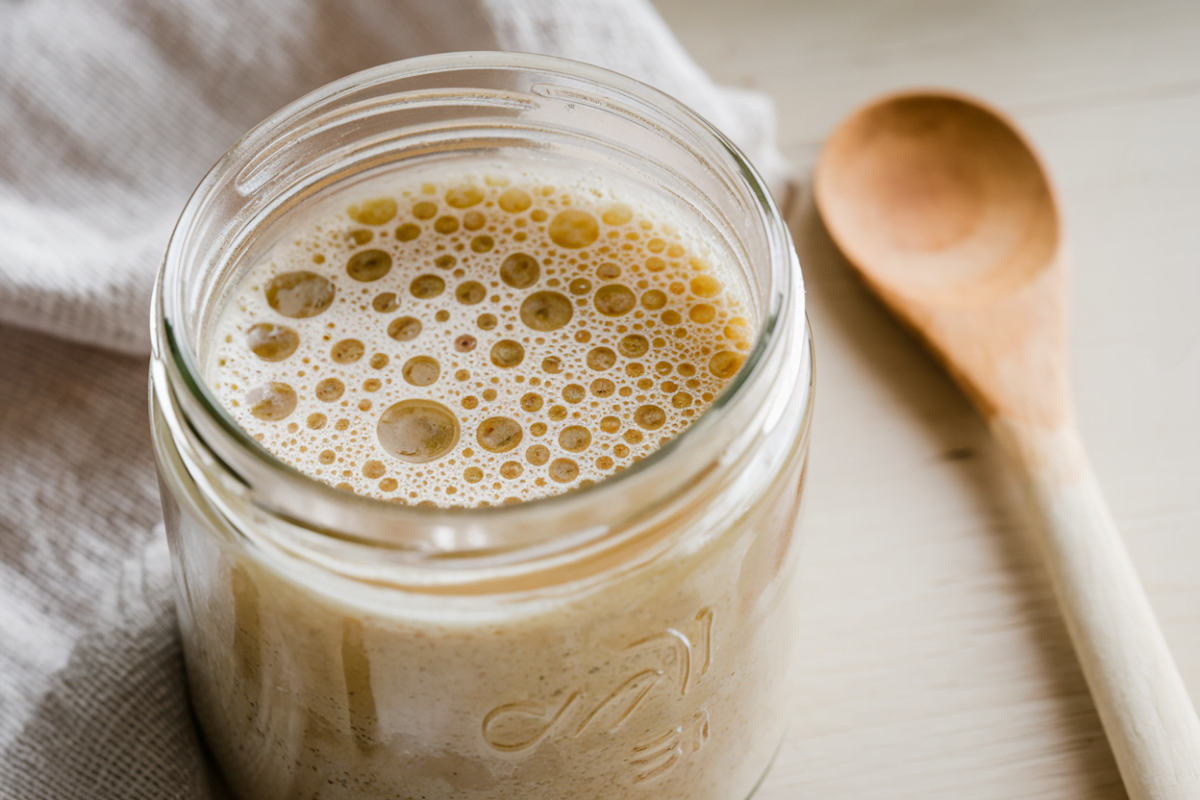
Understanding Sourdough: Starter, Discard, and Their Uses
Sourdough baking begins with a starter. This is a mixture of flour and water that has been fermented over time.
The starter is teeming with wild yeast and bacteria. These microorganisms are what make the dough rise. They also give sourdough its distinctive tangy flavor.
Feeding your starter regularly keeps it active. You add fresh flour and water, which the yeast and bacteria consume. This process creates waste, which is known as sourdough discard.
Sourdough discard might seem like waste, but it’s far from it. It’s full of flavor and can be used in a variety of recipes. From pancakes to crackers, the possibilities are endless.
In this recipe, we’ll be using both sourdough starter and discard. They’ll add depth of flavor to our cinnamon rolls, making them truly special.
The Benefits of Sourdough in Baking
Sourdough baking has many benefits. For starters, it’s a natural leavening agent. This means it doesn’t require commercial yeast to rise.
The wild yeast in sourdough starter is more flavorful than commercial yeast. It imparts a tangy, complex taste to baked goods. This is a flavor that’s hard to achieve with commercial yeast alone.
Sourdough baking is also beneficial for your health. The fermentation process breaks down gluten, making it easier to digest. It also increases the availability of nutrients in the flour.
Finally, sourdough baking is a sustainable practice. By using sourdough discard in recipes, you’re reducing food waste. Plus, making your own bread reduces reliance on store-bought options, which often come in plastic packaging.
Preparing Your Sourdough Starter for Baking
Before you start baking, you need to prepare your sourdough starter. This involves feeding it regularly to keep it active. A well-fed starter is crucial for successful sourdough baking.
Feeding your starter involves adding equal parts flour and water. This provides the yeast with the nutrients it needs to grow. You should feed your starter at least once a day, preferably at the same time each day.
When your starter is ready to use, it should be bubbly and have a pleasant, slightly sour smell. If it has a strong, unpleasant odor or visible mold, it’s best to discard it and start over. Remember, a healthy starter is the foundation of a successful sourdough cinnamon rolls recipe.
Ingredients for Your Sourdough Cinnamon Rolls
Now that your sourdough starter is ready, let’s gather the ingredients for your sourdough cinnamon rolls. This recipe calls for simple, everyday ingredients that you likely already have in your pantry.
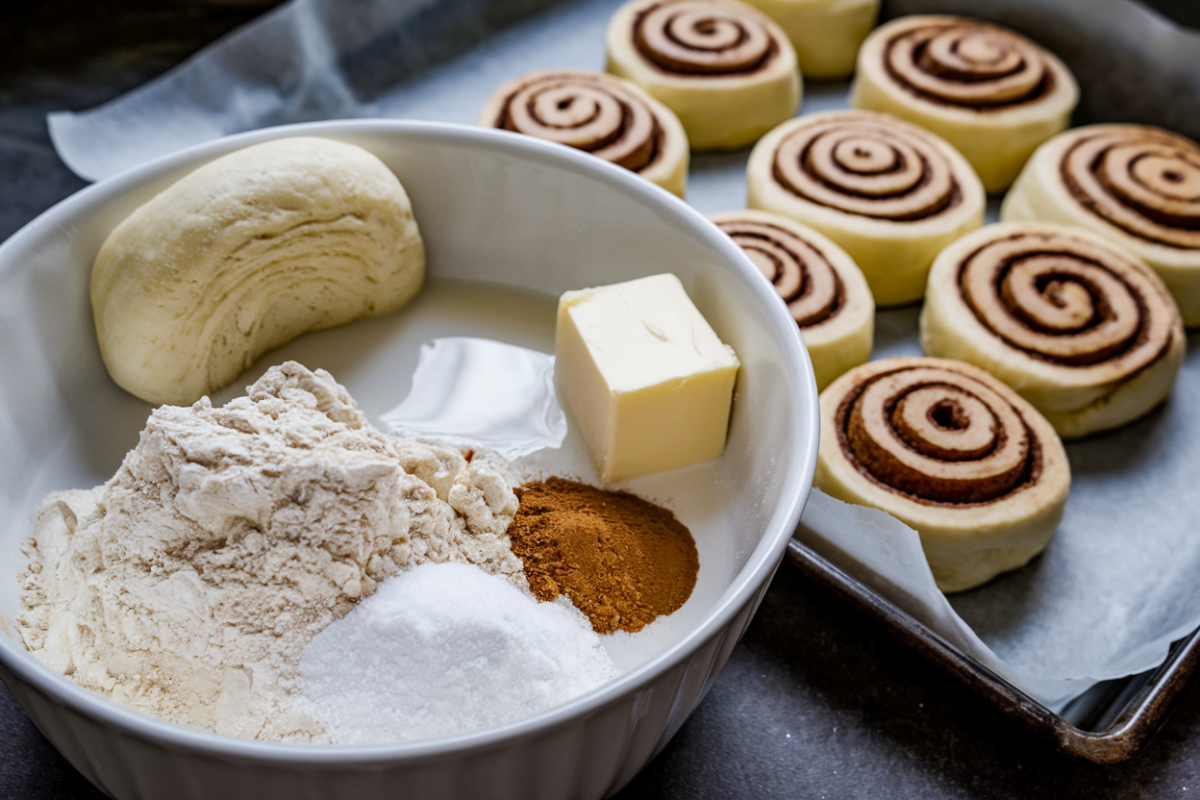
The ingredients are divided into three parts: the dough, the cinnamon sugar filling, and an optional glaze. Let’s take a look at each part.
Dough Ingredients
For the dough, you will need:
- 1 cup active sourdough starter
- 1/2 cup warm milk
- 2 cups all-purpose flour
- 1/4 cup granulated sugar
- 1/4 cup unsalted butter, melted
- 1 large egg
- 1/2 teaspoon salt
Cinnamon Sugar Filling
For the cinnamon sugar filling, you will need:
- 1/2 cup brown sugar
- 2 tablespoons ground cinnamon
- 1/4 cup unsalted butter, softened
Optional Glaze Ingredients
For the optional glaze, you will need:
- 1 cup powdered sugar
- 2-3 tablespoons milk
- 1/2 teaspoon vanilla extract
Step-by-Step Guide to Making Sourdough Cinnamon Rolls
Now that we have our ingredients ready, let’s dive into the process of making sourdough cinnamon rolls. This guide will walk you through each step, ensuring you end up with delicious, fluffy rolls.
Mixing the Dough
Start by combining your active sourdough starter, warm milk, melted butter, and egg in a large bowl. Stir until well mixed.
Next, add in your flour, sugar, and salt. Mix until a sticky dough forms. This is the beginning of your sourdough cinnamon rolls.
First Rise: Bulk Fermentation
Once your dough is mixed, it’s time for the first rise, also known as bulk fermentation. Cover your dough and let it rest at room temperature.
This process can take anywhere from 3 to 12 hours, depending on the temperature and the activity of your starter. The dough should double in size and be full of bubbles.
Rolling and Filling the Dough
After the first rise, it’s time to roll out your dough. On a floured surface, roll your dough into a large rectangle.
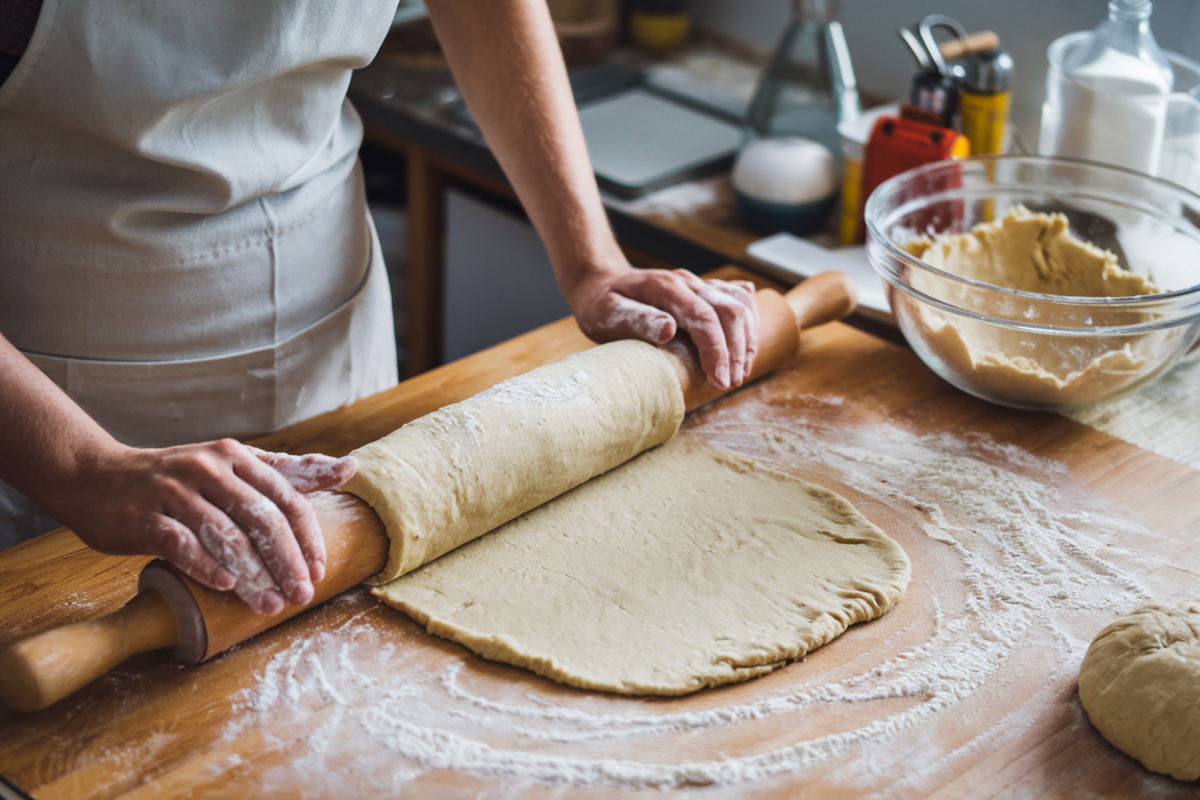
Spread the softened butter over the dough, then sprinkle with the brown sugar and cinnamon. This creates the sweet, spicy filling that makes cinnamon rolls so delicious.
Shaping the Rolls
Starting at one end, roll the dough tightly into a log. Slice the log into individual rolls, about 1-2 inches thick.
Place the rolls in a greased baking dish, leaving some space between each roll for them to expand during the second rise.
Second Rise: Proofing the Rolls
Cover the baking dish with a clean towel and let the rolls rise again. This is known as proofing.
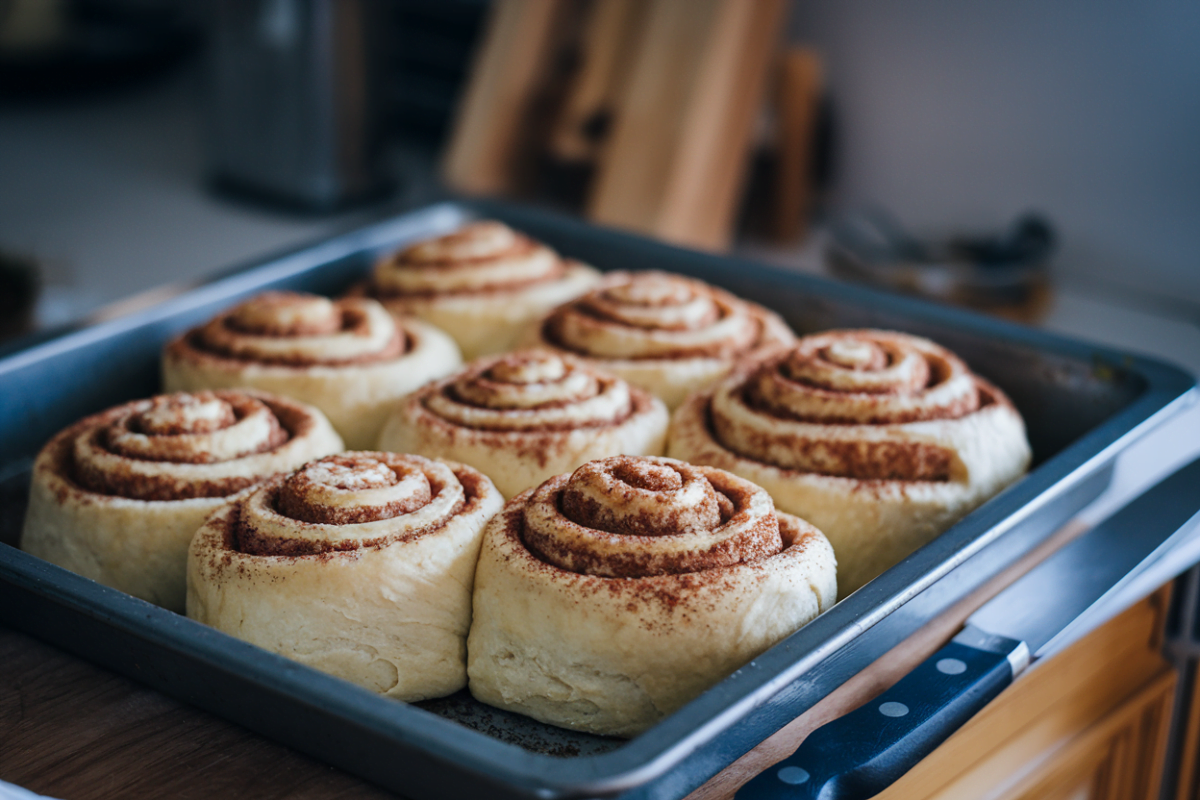
This second rise gives the rolls their final size and shape. It can take 1 to 2 hours, or until the rolls have puffed up and filled the baking dish.
Baking Your Sourdough Cinnamon Rolls
With your rolls proofed and ready, it’s time to bake. Preheat your oven to 375°F (190°C). Bake the rolls for 25-30 minutes, or until they’re golden brown on top.
Keep an eye on your rolls as they bake. If they start to brown too quickly, you can cover them with foil for the last few minutes of baking. This will prevent them from burning while still allowing them to cook through.
Creating the Perfect Glaze or Frosting
While your cinnamon rolls are baking, you can prepare the glaze or frosting. For a simple glaze, combine powdered sugar, milk, and vanilla extract in a bowl. Stir until smooth.
If you prefer a cream cheese frosting, mix softened cream cheese, butter, powdered sugar, and vanilla extract. Beat until creamy. This frosting adds a tangy, creamy contrast to the sweet, spicy cinnamon rolls.
Remember, the glaze or frosting should be added while the rolls are still warm. This allows it to melt slightly, seeping into the crevices of the rolls. It’s the final touch that makes these sourdough cinnamon rolls truly irresistible.
Serving and Storing Your Sourdough Cinnamon Rolls
Once your sourdough cinnamon rolls are baked and glazed, it’s time to enjoy them. Serve them warm for the best experience. The warmth enhances the flavors and makes the rolls extra soft and gooey.
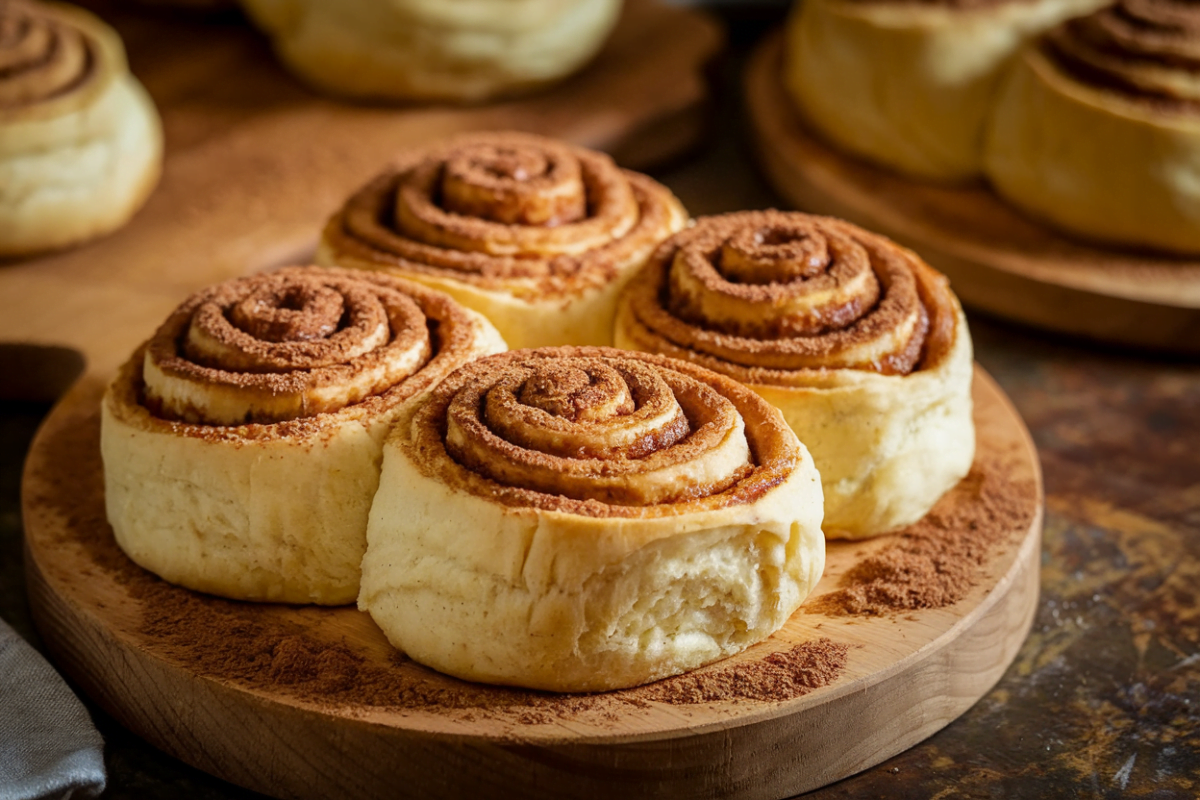
If you have leftovers, store them in an airtight container at room temperature. They will stay fresh for up to two days. For longer storage, you can refrigerate them for up to a week or freeze them for up to three months. To reheat, simply warm them in the oven or microwave until heated through. The aroma of reheated cinnamon rolls can make any day feel special.
Troubleshooting Common Sourdough Baking Issues
Sourdough baking can be a bit tricky, especially for beginners. If your dough isn’t rising, it could be due to an inactive starter. Make sure your starter is bubbly and has a pleasant sour smell before using it. If it’s not active, feed it with equal parts flour and water and let it sit at room temperature until it’s ready.
Another common issue is the dough being too sticky or too dry. This can be fixed by adjusting the amount of flour or water in the recipe. Remember, sourdough is a living thing and it can be affected by many factors including temperature, humidity, and the type of flour used. So, don’t be discouraged if your first few attempts aren’t perfect.
Lastly, if your cinnamon rolls aren’t as fluffy as you’d like, it could be due to over or under proofing. Make sure to follow the proofing times in the recipe and look for visual cues like the dough doubling in size. With practice, you’ll get a feel for it and be able to make adjustments as needed.
Adapting the Recipe: Vegan, Gluten-Free, and Other Variations
This sourdough cinnamon rolls recipe is quite versatile and can be adapted to suit different dietary needs. For a vegan version, replace the butter with a plant-based alternative and use a non-dairy milk. You can also substitute the egg with a flax or chia seed “egg”. Just mix one tablespoon of ground flaxseed or chia seeds with three tablespoons of water and let it sit for 15 minutes before using.
For a gluten-free version, use a gluten-free flour blend in place of the regular flour. Keep in mind that gluten-free dough may not rise as much as regular dough, but the result will still be delicious. You may also need to adjust the amount of liquid in the recipe, as some gluten-free flours absorb more water than others.
If you want to add some extra flavor or texture to your cinnamon rolls, feel free to experiment with different fillings. You could add chopped nuts, dried fruit, or even a layer of cream cheese. The possibilities are endless, so don’t be afraid to get creative and make this recipe your own.
Conclusion: Enjoying Your Homemade Sourdough Cinnamon Rolls
There’s something truly special about homemade sourdough cinnamon rolls. The process of making them is a labor of love, but the end result is well worth the effort. The unique tang of the sourdough combined with the sweet, spicy cinnamon filling creates a flavor profile that’s hard to beat.
Whether you’re a seasoned sourdough baker or a beginner just starting out, this recipe is a great way to explore the versatility of sourdough. So why not give it a try? You might just find that these sourdough cinnamon rolls become a new favorite in your baking repertoire.
Frequently Asked Questions
We understand that you may have some questions about this sourdough cinnamon rolls recipe. Here are some of the most common queries we’ve received, along with our responses.
Can I make these cinnamon rolls with all-purpose flour?
Yes, you can use all-purpose flour in this recipe. However, bread flour has a higher protein content, which helps to create a chewier texture in the final product. If you use all-purpose flour, your cinnamon rolls may be slightly softer.
How can I make these cinnamon rolls dairy-free?
To make these cinnamon rolls dairy-free, you can substitute the milk with a non-dairy milk of your choice. For the butter, use a dairy-free butter substitute or coconut oil. Ensure any glaze or frosting is also dairy-free.
Can I freeze the dough for later use?
Absolutely. After shaping the rolls, you can freeze them on a baking sheet. Once frozen, transfer them to a freezer bag. When you’re ready to bake, let them thaw and rise until doubled in size before proceeding with the recipe.
What if my dough isn’t rising?
If your dough isn’t rising, it could be due to a few reasons. Your sourdough starter may not be active enough, or the room temperature might be too cold. Try placing your dough in a warmer spot and give it more time.
Can I prepare these cinnamon rolls the night before?
Yes, you can prepare the dough and shape the rolls the night before. Cover them and let them do their second rise in the fridge overnight. In the morning, let them come to room temperature before baking.
